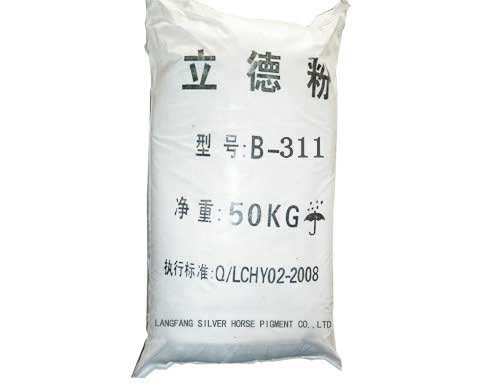
10 月 . 12, 2024 18:15 Back to list
industrial grade titanium dioxide
Industrial Grade Titanium Dioxide An Overview
Titanium dioxide (TiO₂) is one of the most widely used compounds in the world, renowned for its high refractive index and excellent UV resistance. It is primarily known for its role as a pigment, providing a bright white finish in a variety of products, from paints and coatings to plastics, cosmetics, and even food. However, titanium dioxide's applications extend far beyond mere aesthetics; its industrial grade formulations play a pivotal role in numerous industries.
Production and Types
Industrial grade titanium dioxide is typically produced through two primary processes the sulfate process and the chloride process.
1. Sulfate Process This method involves the reaction of titanium ores with sulfuric acid. The resulting titanium sulfate is then purified and converted into titanium dioxide via a series of steps. While this method is less expensive, it generates a significant amount of waste, making it less environmentally friendly.
2. Chloride Process The chloride process uses chlorine gas to convert titanium ores into titanium tetrachloride (TiCl₄). This method is more efficient and produces a purer form of titanium dioxide. The TiCl₄ is then oxidized to produce TiO₂. Due to its cleaner production process, the chloride method is becoming increasingly favored in the industry.
The resultant titanium dioxide can be classified into two main types rutile and anatase. Rutile is predominant in industrial applications due to its superior opacity and durability, making it ideal for outdoor coatings and other applications where longevity is essential.
Applications
Industrial grade titanium dioxide finds its way into a myriad of applications, showcasing its versatility
1. Paints and Coatings In the paint industry, titanium dioxide is the gold standard for white pigments. Its high opacity allows for excellent coverage, making it a preferred choice for both interior and exterior coatings. It enhances brightness and provides durability against environmental factors, helping to maintain the aesthetic appeal of structures over time.
industrial grade titanium dioxide

2. Plastics In the plastics industry, titanium dioxide serves not only as a pigment but also as a means to improve UV resistance. It helps in preventing the degradation of plastic products exposed to sunlight, thus extending their lifespan.
3. Cosmetics Due to its non-toxic and safe profile, titanium dioxide is commonly used in cosmetic formulations. It functions as a pigment in products such as foundations, sunscreens, and powders. Its ability to reflect UV light makes it an important ingredient in sun protection products.
4. Food Industry Interestingly, titanium dioxide can also be found in some food products as a colorant. Generally recognized as safe by various health authorities when used in regulated amounts, it contributes to the opacity and brightness of food products.
5. Paper Industry In papermaking, titanium dioxide is used to enhance brightness and print quality. Its presence improves the quality of printing inks and coatings, contributing to sharper images and more vivid colors on printed materials.
Environmental Considerations
Despite its numerous benefits, the production and use of titanium dioxide are not without environmental concerns. The sulfate process is particularly criticized for generating large quantities of waste products, which can lead to soil and water contamination if not managed properly. Furthermore, concerns have been raised regarding the inhalation of nano-sized titanium dioxide particles, highlighting the need for rigorous safety protocols in its handling and application.
Future Prospects
As industries continue to strive for greater sustainability, the demand for more environmentally friendly production methods for titanium dioxide is likely to grow. Innovations in processing technologies, such as the development of recycling methods for titanium waste, could minimize environmental impacts. Moreover, as regulations around chemical usage tighten, manufacturers may be pushed toward newer, safer alternatives that retain the beneficial properties of titanium dioxide.
Conclusion
In conclusion, industrial grade titanium dioxide remains a crucial component across multiple industries, valued for its unique properties and versatility. While environmental concerns persist, ongoing advancements in production methods and regulatory frameworks may pave the way for a more sustainable future for this vital compound. As industries adapt and evolve, titanium dioxide's role is set to remain significant, ensuring that it will continue to contribute to advancements in technology and manufacturing practices for years to come.
-
Lithopone for Plastic & TiO2 R-5568/SK-6658 Masterbatch Solutions
NewsMay.30,2025
-
China Leading Rutile TiO2 Manufacturer - R5566 & R996 Grades Available
NewsMay.30,2025
-
High-Purity Anatase & Rutile TiO2 Powder Trusted Manufacturer
NewsMay.30,2025
-
High-Purity Anatase Products Trusted Supplier & Manufacturer
NewsMay.29,2025
-
Best Price Eco-Friendly Rutile TiO2 Supplier & Wholesale Factory
NewsMay.29,2025
-
Chinese Anatase Titanium Dioxide for Ceramic Glaze Reliable Supplier
NewsMay.29,2025
